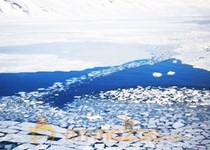Melting sea ice in the Arctic may be causing the snowier winters the northern hemisphere has experienced in the last two seasons, US and Chinese researchers reported on Monday.
The level of Arctic sea ice reached a new record low in 2007, said the study led by the Georgia Institute of Technology and published in the Proceedings of the National Academy of Sciences.
Meanwhile, above-average snowfall has blanketed large parts of the northern United States, northwestern and central Europe, and northern and central China.
The northern hemisphere has recorded its second and third largest snow covers in documented history in the last two seasons, spanning the winters of 2009-2010 and 2010-2011.
Researchers believe the disappearing Arctic ice is sending more water vapor into the air, and is interfering with atmospheric currents and westerly winds that would typically have swept snowy weather northward.
Instead, more cold air is descending into the middle and lower latitudes, "leading to increased heavy snowfall in Europe and the northeast and midwest regions of the United States," said Jiping Liu, a senior research scientist at Georgia Tech.
The research included scientists from the Chinese Academy of Sciences and New York's Columbia University, and was supported by NASA and the National Science Foundation.







